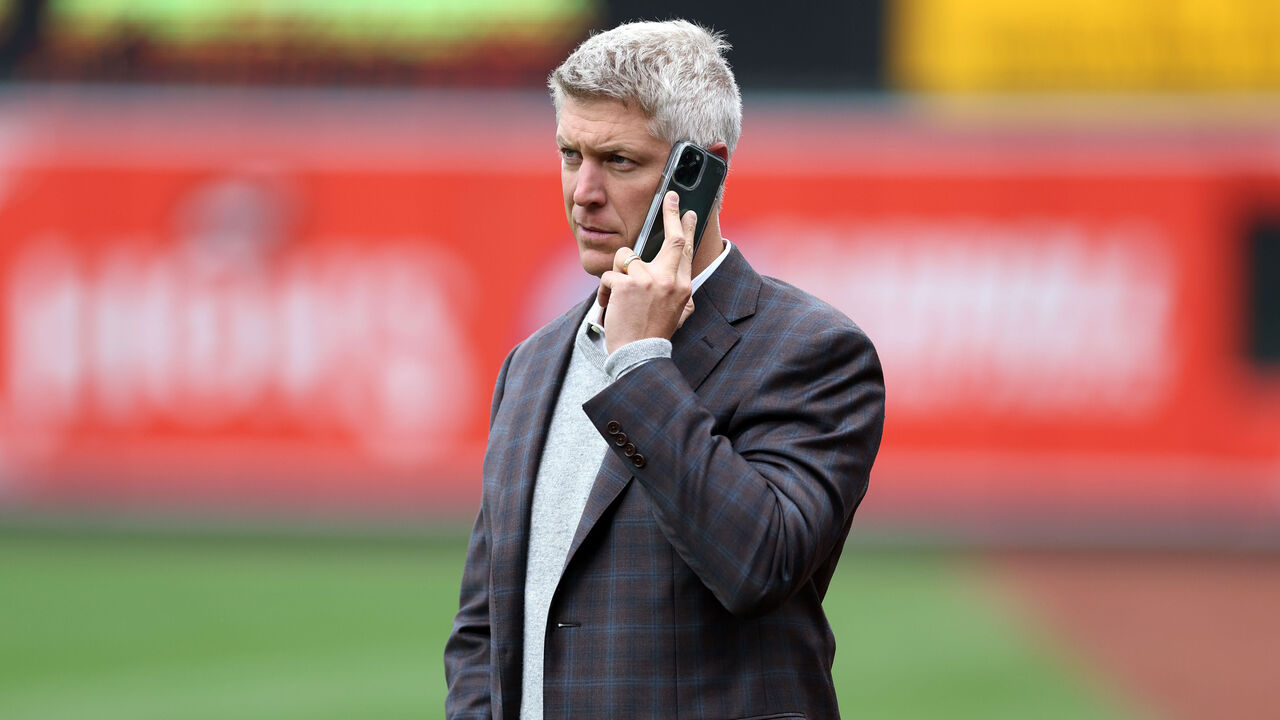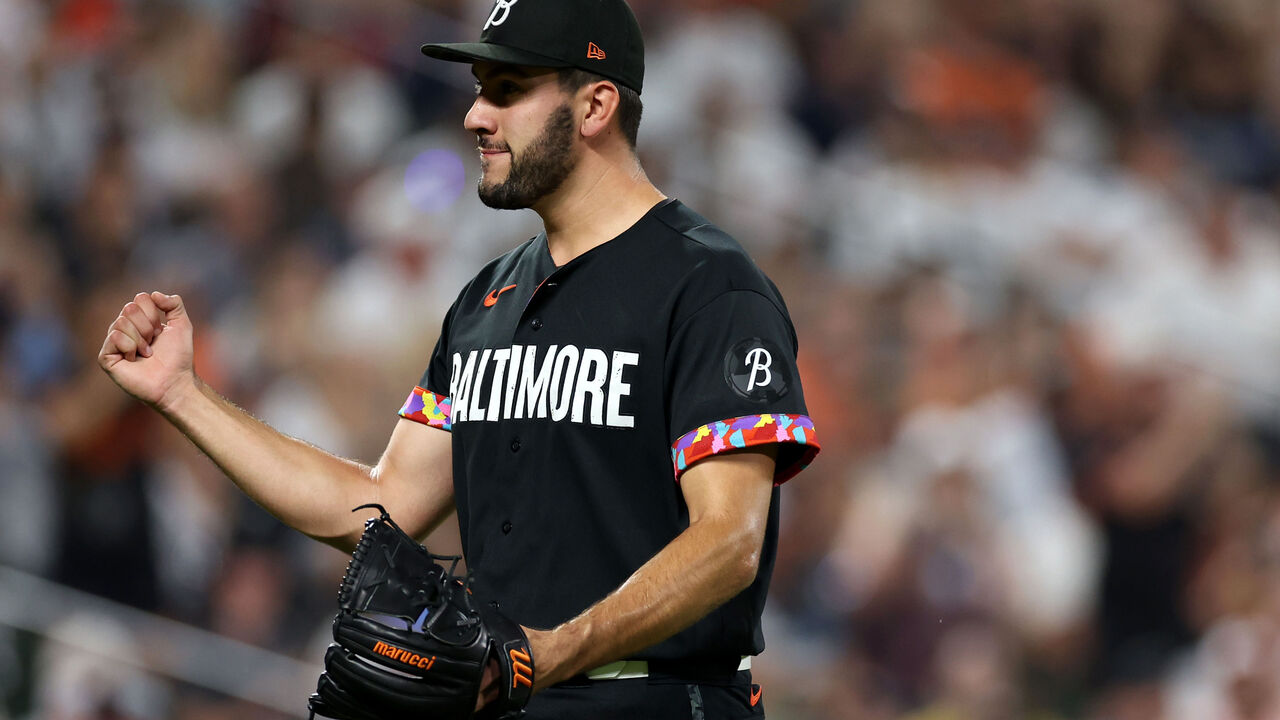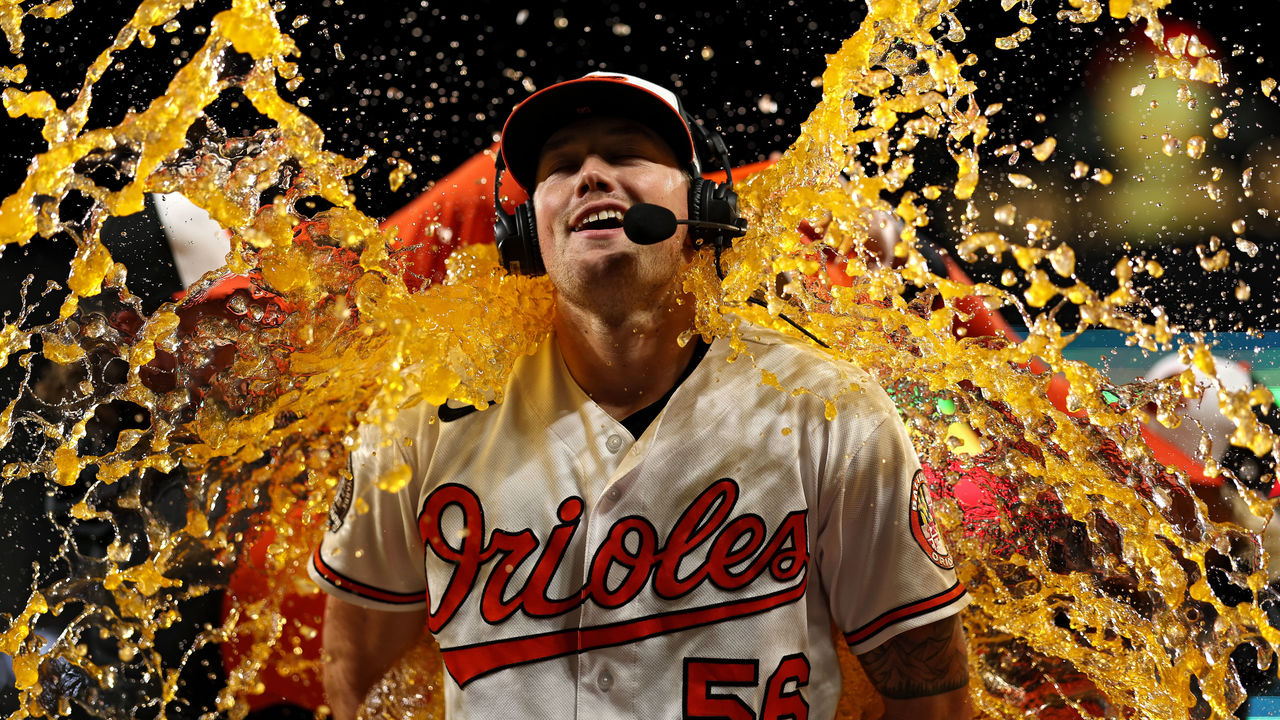Arms race of necessity: How the O's turned a weakness into a strength on the fly
The Orioles quickly installed one of the game's best player development systems under general manager Mike Elias - hired in November 2018 - and his lieutenants. They sped up the rebuilding process by bringing over best practices from the Astros, the previous employer of many Baltimore officials, aided by knowing which experiments did and didn't work in Houston.
Elite Astros teams of recent years (2017 in particular) will be forever tarnished by their involvement in the sign-stealing scandal, but the franchise undoubtedly changed the game. Houston pioneered training methods like adopting high-speed cameras for pitch design and biomechanical analysis, in addition to thinking about new ways to train skills like plate discipline.
The Orioles have also drafted well with their early picks after last-place finishes in recent years (a model employed by the Astros and Cubs before them), funneling amateur elite talents into their exemplary player development machinery. They've generally chosen position players early in the draft - again, like the Astros and Cubs - and picked guys like Adley Rutschman, Heston Kjerstad, Jackson Holliday, and Gunnar Henderson.
Rutschman and Henderson are the new faces of the franchise, leading the Orioles to the American League's No. 1 seed this season with 101 wins.

There was little doubt a special position-player core was forming at Camden Yards this spring. But the question, at least in the short term, was about the Orioles' starting pitching. Could they develop it in time to catch up with the bats? Baltimore doesn't historically pay for quality free-agent pitching. Answers generally must come from within.
The Orioles didn't make a major signing or trade during the previous offseason. The most money they guaranteed a pitcher was $10 million to Kyle Gibson on a one-year deal as a veteran innings eater. They traded for Cole Irvin, now in the bullpen, last January. They acquired Jack Flaherty from the Cardinals at this year's trade deadline, but Flaherty isn't a difference-maker.
Things didn't get off to a promising start this campaign.
Top pitching prospect Grayson Rodriguez struggled so badly he was demoted to Triple-A in May. Kyle Bradish had a shaky April. By late spring, it seemed the Orioles were an emerging team with an enviable young lineup and great bullpen, but with a fatal flaw: they didn't have starting pitching.
Then, like magic, just about every key Orioles starter improved. And perhaps this magic is why Baltimore keeps beating outside expectations.
Three Orioles ranked in the top 20 in ERA in the second half of the season: Bradish (2.34, second), Rodriguez (2.58, fifth), and Dean Kremer (3.25, 17th). Bradish and Rodriguez also placed in the top 10 in pitching WAR in the second half. The Orioles' staff ranks fifth in ERA (3.91) and sixth in pitching WAR (18.2) since the start of July. And they trail only the Twins in ERA and Phillies in starting pitching WAR among the remaining playoff teams.
While the season-ending injury to Félix Bautista certainly saps the bullpen, weaknesses on the Orioles are difficult to identify as they open the ALDS against the Rangers on Saturday. Bradish starts Game 1, and Rodriguez gets Game 2.
This story is about how the Orioles turned things around on the mound, which could help spark the best era of Baltimore baseball in decades.

The Orioles pinned their top-of-the-rotation hopes on Rodriguez.
He entered the year as one of the game's premier prospects. When he didn't make the club out of spring training, many cried service-time manipulation after Elias said Rodriguez "wasn't ready."
Turns out, the GM was correct.
Rodriguez got the call in early April and struggled mightily with command, falling behind in counts with everything seemingly hit hard. He was demoted to Triple-A Norfolk on May 27, posting a 6.57 ERA while walking more than four batters per nine innings.
"I think just how a hitter can go through a slump, you lose a feel for it. You start trying different things. You really start doing some other things that don't help," Rodriguez told theScore.
It wasn't a short demotion. Rodriguez was gone for nearly two months.
But his seriousness about the work back in the minors was essential to his development - despite his pedigree and wanting to be in the majors. He didn't let disappointment get in the way.
"I think there are always going to be bumps in the road, no matter what part of your career you are in," Rodriguez said. "How do you handle it? How do you bounce back?"
He had two significant goals: improve fastball command and rediscover the changeup feel that escaped him.
The Orioles simplified his approach with his fastball, stressing not being too fine. They had him think about throwing fastballs in three locations: up and away, up and in, and down and away.
"I think breaking the plate into thirds really helped," Rodriguez said.
So did experimenting away from the major-league spotlight.
"In the minor leagues, results aren't necessarily all that important," Rodriguez said. "Just being able to go out and throw a lot of fastballs. Really taking that fastball work from the bullpen - 'This is where we are going with it (today)' - and taking it into games."
Rodriguez has always been coachable.
He's been open to using high-speed cameras and Rapsodo spin-tracking feedback to help design more effective pitches. Every game, every bullpen, every throw in Norfolk was monitored and recorded.
Orioles assistant pitching coach Darren Holmes and lead pitching coach Chris Holt followed the reports and watched the film. They watch video on all Double-A and Triple-A pitchers in case they find themselves working with them at the big-league level.
"We took him out of spring training and wanted him to be good, and he wasn't. He was scuffling to find his way," Holmes said. "His delivery wasn't really good at that point. So when we sent him down, it wasn't, 'You're out of the picture now. Let's just move on.' We had a great game plan. We knew exactly what we wanted. Our Triple-A pitching coach knew what to do with him. And he executed it really well. When Grayson came back, we had a talk. He said: 'This was the best thing in the world for me. For me, to have gone down and been able to relax, working on what I needed to work on and be ready.'"
Rodriguez said he regained his confidence in Norfolk.
"Just getting back into an attack mindset," Rodriguez said. "Getting back to going after hitters. Throwing a lot of strikes. I think the first time in the big leagues, falling behind in counts, a lot of hard hits, it can kind of make you less aggressive."
Rodriguez's zone percentage jumped 10% from his first stint in the majors to his second. He was ahead in counts more often when he returned and was better at getting hitters to chase out of the zone. His top-end velocity also came back: his fastball went from sitting 94-95 mph in some starts to averaging 98 mph in the second half.
Grayson Rodriguez now has a 2.18 ERA over his last 11 GS and 2.58 in 13 GS since being recalled from the minors in mid-July.#Birdland pic.twitter.com/UTztTRgpEo
— Eric Cross (@EricCross04) September 28, 2023
The high-speed Edgertronic camera - the "Edger," as Holmes calls it - also helped Rodriguez recapture his changeup's optimal grip and release. He could see exactly how his fingertips and wrist position imparted spin on the ball and which grip adjustments created an ideal movement and which didn't.
"You see how the ball is coming off your fingers, detail that the human eye just can't see," Rodriguez said.
He was one of the AL's better pitchers since the Norfolk reset.

Bradish got better, too.
He struggled in April, posting a 6.14 ERA, but then the Orioles put him into their magic machine.
Baltimore noticed early in the season that Bradish had a glove position that caused "some things in his lower half that he needed to work on," Holmes explained.
Holmes elaborated on how adjustments are made: He and Holt collaborate on what they see observationally, taking notes and combining them with data from Ryan Klimek, the Orioles' pitching strategy coach, an analyst dedicated to helping Baltimore's pitchers exclusively.
The other change was with pitch mix.
Bradish always had a good slider. The Orioles helped make it elite.
His pitch possesses above-average horizontal and vertical movement. It moved 6.5 inches horizontally more than the MLB average last year, or 143% above average. This season, the pitch is darting horizontally 8.4 inches - or 205% - above the major-league average.
But Bradish wasn't throwing the slider often early this season, so the club encouraged him to use it more.
Bradish threw the slider on only 16% of offerings in April. Remember, it's his best pitch. In May, he increased its usage to 33%. He hasn't looked back since. Bradish threw the pitch 50% of the time in a late-season start against Houston.
Batters hit .167 against Bradish's slider this season.
"His slider is stinking good," Holmes said. "It's probably one of the top 10 in baseball."
Bradish's slider has an elite 36.5% whiff rate. Riding it, he posted a 2.34 ERA and 21 K-BB% mark in the second half.
He also has an above-average curveball and throws his two breaking balls 48% of the time, compared to 43% fastball usage. Good luck, hitters.
"He was always good, but he went to another level now," Holmes said.
Just look at what Kyle Bradish's slider is doing to LA right now pic.twitter.com/UJi6702DNZ
— Casey Drottar (@CDrottar19) May 18, 2023
Rodriguez and Bradish haven't had many setbacks since early this season, and perhaps that's because the Orioles are vigilant in trying to cut off issues in real time.
"If it's something detrimental, say his changeup is not (fading), it's staying kinda straight, we see that because we have iPads," Holmes explained. "We can look at the (third-base and first-base) cameras. We can see behind, in front. We can see everything. We go through that every single time anyone pitches. We see it.
"When (a pitcher) comes back (between innings), we go over to him. We show him so he sees exactly what we're talking about, which is something we didn't have five, six years ago. We didn't have the information."
Real-time adjustments are possible now, helping bust slumps or diminishing their duration.

Kremer's story is different.
His improvement started in the offseason when he sought outside help in working with his trainer, Taylor Davis, at Push Performance near his offseason home in Tempe, Arizona.
"We sat down and said, 'OK, where are the areas that I need to improve in? Where are the areas where I am good at, where I excel?'" Kremer said. "And along with (Orioles strength coach) Trey Wiedman, we kind of went hand-in-hand in building a program."
They agreed that Kremer needed to get stronger, add weight, and move faster down the mound. It's simple physics: more mass and greater acceleration equals more energy, which equals more velocity. It's not unlike the formula Spencer Strider employed.
Last year, Kremer's fastball velocity improved from an average of 92.6 mph to 93.6. It jumped to 94.6 mph in 2023.
"I'm a late bloomer. I'm hoping 30 is when it really starts to click," the 27-year-old said. "My goal is to have every pitch shape and be able to throw 100 mph. That's the dream. Whatever it takes to get to that, I strive for."
If Kremer falls short, he's at least raising the bar. It speaks to the new Orioles' Way.
Something else interesting happened that might seem paradoxical: Kremer didn't lose the ability to command the baseball as his velocity increased. His 7.5% walk rate is below what he's posted most of his pro career.
"Mechanical changes that allow you to reach those peak velocities" also clear up inefficiencies, Kremer added.
The total package led to a 3.25 ERA in the second half, giving the Orioles a viable mid-rotation arm without going outside the organization to acquire one. Baltimore also enjoyed John Means returning from Tommy John surgery late this season, giving it further depth.
Once the Orioles' greatest liability, starting pitching is now a strength as their October begins.
Travis Sawchik is theScore's senior baseball writer.